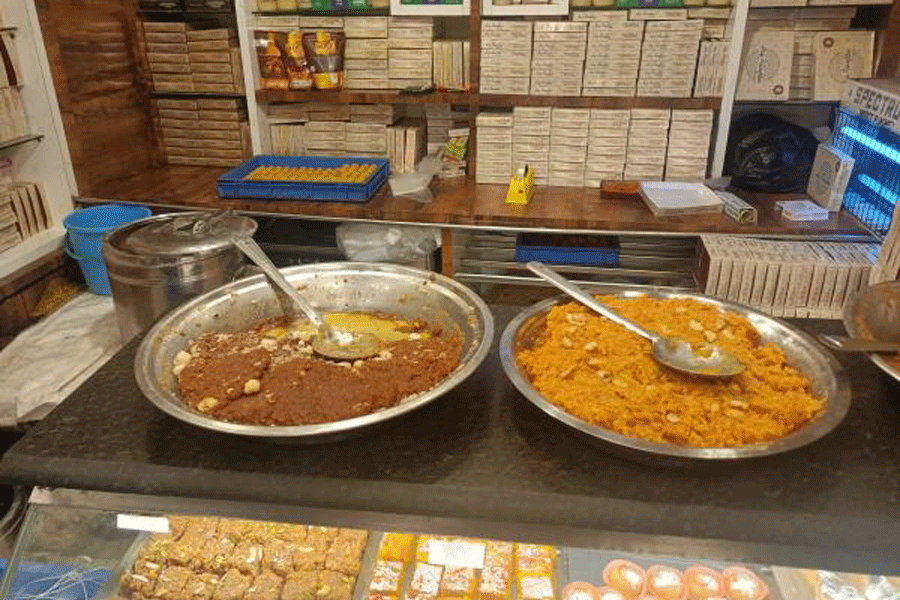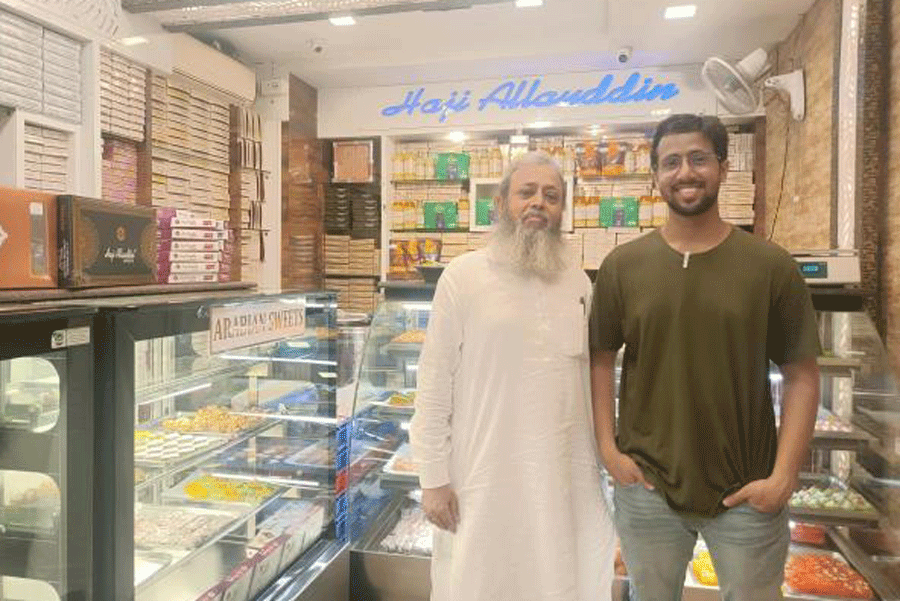Haji Allauddin, the sweet shop on Phears Lane in central Calcutta, is more than a hundred years old. Haji Nizamuddin, who is the owner now, is Allauddin’s great-grandson. He says, “My grandfather had started this shop and it is named after him. We have heard that in the early days there was no shop, just some wares on a bench in north Calcutta’s Colootola .”
Haji Allauddin had come from Uttar Pradesh’s Sitapur with his family.
Nizamuddin does not know what drove them all the way. “Maybe our
ancestors were farmers, maybe my ancestor was of rebellious nature and left Sitapur in search of better opportunities,” says Hamd Sultan, who is Nizamuddin’s son.
“The earliest registration papers in our possession go back to 1904 but I have heard from my elders that the shop was operational even a decade before that,” adds Sultan, who is now getting involved in the affairs of his ancestral business. Sultan and his cousins are planning to expand.

Haji Allauddin, a sweet shop on Phears Lane, north Calcutta. Moumita Chaudhuri
There are three branches of the shop already, one on Beck Bagan Row, another on Ripon Street and the other on Dent Mission Road in Kidderpore. The shop owners want to open branches in the Middle East next.
Allauddin had started his sweet journey by making batashas. He would go door to door and sell them. Batashas were not only used in every religious ritual in Bengal, but was also part of the daily diet of certain sections.
Some years later, he opened the shop in Colootola.
In the initial days, Allauddin would stock gond ka halwa, a kind of mashed sweet dish made from the extracts of the babul tree with a sprinkling of dry fruits. It is also called battisa after the 32 ingredients in it and is considered good for pregnant women as well as the infirm. He also sold mawa laddu and gulab jamun fried in desi ghee.
From whom or where Allauddin learnt to make these sweets remains a mystery. Says Sultan, “He chose to use ghee made in Samastipur in Bihar only as its flavour and texture were best suited to our kind of sweets.” In deference to his wisdom, his progeny continues to source all the ghee they need from Samastipur. “It has now become our USP,” adds Sultan.
After Allauddin, his son Nasiruddin and, thereafter, his son Nizamuddin introduced many more sweets — Bournvita sweets, patisa, milky soft bar, coconut-based products, milk halwa, walnut halwa. Nizamuddin also introduced gajar ka halwa, dudhiya halwa and halwa sohan. The shop sells Kanpuriya laddu, mansuri and Karachi halwa too.
Claims Sultan, “These sweets are not found in any sweet shop in Bengal. Even the kalakand in our shop is flavoured.” Their outlets sell carrot and mango-flavoured kalakand.
A year-and-a-half ago, Nizamuddin had made a trip to Dubai. He says, “I went to several shops to taste the sweets they sell. The Middle East does not have a good source of milk. Camel milk is available but is not abundant, cow or buffalo milk is hard to find. So the sweets have very little or at times no milk in them. For example, we make patisa from pure milk, they make it with besan and just a dash of milk.”
Since his return, Nizamuddin has introduced in his shops what has since been branded Arabian Sweets. In the kitchen of Haji Allauddin in south Calcutta’s Picnic Garden, cooks are busy making Arabian sweets.
“It is made of six types of dried fruits and honey. No sugar is added to it,” he says. There are five other sweets that have been influenced by the sweets of Dubai — khajur dry fruit barfi, anjeer roll with poppy seeds sprinkled all over, kaju diamond, dry fruit crunch and chocolate dry fruit ball.
“In making these sweets we have moved away from our legacy — there is no ghee or mawa in them,” says Sultan. The owners are now trying their hands at two more Middle-Eastern sweets — baklava and kunafa.
Nizamuddin says, “Nobody has shared any recipes with us. We are learning to make them by trial and error and I believe our sweets are turning out better than the originals.”
The proof of their pudding will, of course, be in the eating. Go, find out.










